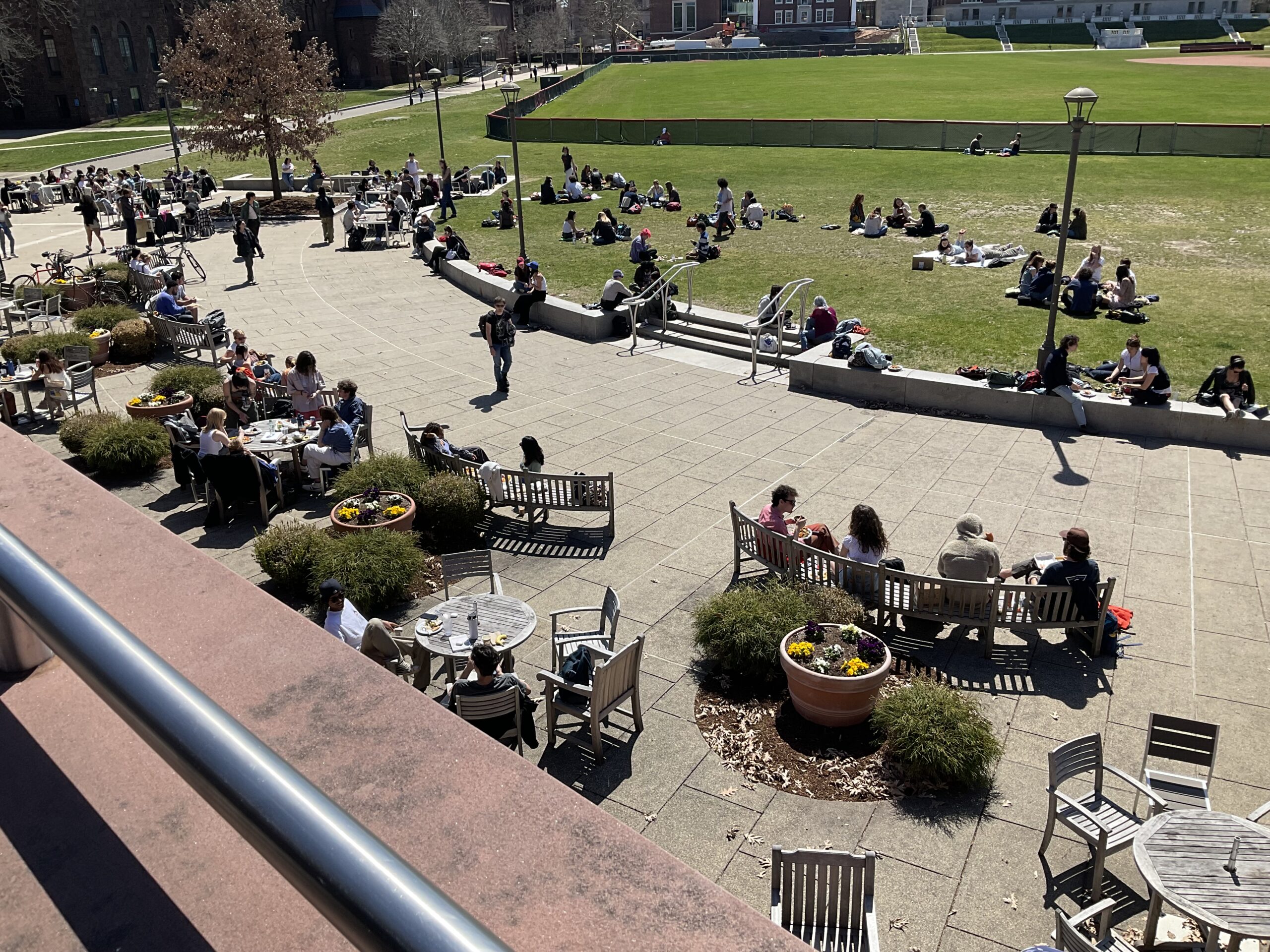On the Road with Betsy Woolf – Wesleyan University

What luck to make a return trip to Wesleyan University, an open, ungated campus in Middletown, Connecticut, on a sunny April day with the temperature in the 60s! It seemed as though most of the 3000 or so students were enjoying lunch on the terrace and patio of the Usdan Center and on the nearby lawns.
Wesleyan is primarily an undergraduate institution, so with only 200 grad students, there are lots of opportunities for students to do research in and work with a professor in any discipline. In fact, 50% of students publish by the time of graduation. One third of students study the humanities and the arts; one third, the natural sciences; and another third, the social sciences. The arts are big on campus, especially film and theater, all housed in an 11-building complex, a distinct section of campus called the Center for the Arts. Undergraduate programs housed in the complex include Art and Art History, Dance, Music, Film and Theater, as well as graduate programs in Music. Performance and exhibition spaces include a concert hall, a world music hall, a performing art hall, a theater, and an art gallery.
One of the student-run arts programs on campus is the One Day Play. Students get together at 8 pm and work overnight writing a play that is rehearsed the next day and produced at 8 pm that day. As my tour guide told it, Lin-Manuel Miranda wrote the first draft of what became a Tony-Award-Winning musical, In the Heights, as a one-day play. Additionally, each night, from Wednesday through Saturday, the university offers a free movie screening of a classic film.
Wesleyan is not just a university for students engaged in the visual and performing arts, though. There are lots of prelaw and premed students on campus; psychology is the most popular major; and the science center is one of the central hubs for students studying all disciplines. Twenty-five percent of students are varsity athletes: 40% of students study abroad. An important mention is Wesleyan’s open curriculum in which students direct their own education in consultation with faculty advisors. That means no core curriculum or set of required courses, although there are nine “General Education Expectations”: By the end of sophomore year, students are expected to have earned at least two course credits in each of the three areas noted above: humanities and arts, natural sciences, social sciences. During the last two years, students are expected to take one additional course credit in each of the three areas. Still, it’s not a requirement, although a student who does not complete all of the expectations is not eligible for honors or election to Phi Beta Kappa.
Students work hard at Wesleyan but say that it is not a competitive place. Social life happens mainly on campus. The school is fully residential from freshman through senior year in which 4th years live in pretty clapboard houses just off campus. These senior houses are the hub of social life. Downtown Middletown is an easy walk.

